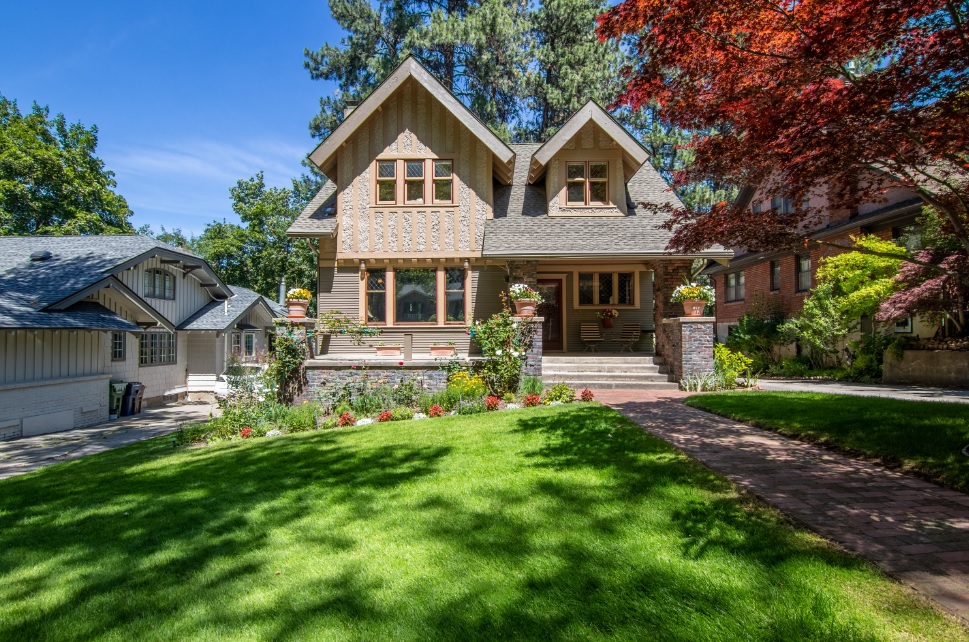
Victorian architecture refers to the architectural styles that were prevalent during the reign of Queen Victoria of the United Kingdom, from 1837 to 1901. The Victorian era witnessed a diverse range of architectural styles, reflecting the eclectic tastes and influences of the time. This period saw a departure from the simplicity of earlier Georgian and Regency styles, with architects drawing inspiration from various historical and cultural sources.
Key characteristics and features of Victorian architecture include:
- Eclecticism:
- Victorian architecture is known for its eclecticism, incorporating a mix of styles and influences from different periods and regions. Architects often blended elements from Gothic, Italianate, Romanesque, and Queen Anne styles, among others.
- Asymmetry:
- Many Victorian buildings exhibit asymmetrical designs, with irregular floor plans, varying rooflines, and unevenly spaced windows. This departure from strict symmetry contributed to the picturesque and eclectic nature of Victorian architecture.
- Steep Pitched Roofs:
- Steeply pitched roofs with decorative gables and dormer windows were common in Victorian architecture. The variety of roof shapes added visual interest to the buildings.
- Ornate Details:
- Elaborate and ornate detailing characterized Victorian architecture. Buildings featured intricate carvings, moldings, and decorative elements such as brackets, fretwork, and finials.
- Textured Facades:
- Facades were often textured with a variety of materials, including brick, stone, and wood. Different textures and patterns were used to create visual interest.
- Towers and Turrets:
- Towers and turrets were popular architectural elements in Victorian design, adding verticality and a sense of grandeur to buildings. These features were often associated with the Queen Anne style.
- Bay Windows:
- Bay windows, which projected outward from the main walls, were a common feature in Victorian homes. These windows not only provided additional interior space but also enhanced the aesthetics of the facade.
- Stained Glass:
- Stained glass windows were frequently used, especially in Gothic Revival and Queen Anne-style buildings. These windows often featured intricate patterns and vibrant colors.
- Ironwork:
- The use of decorative ironwork, including wrought iron railings, verandas, and balconies, became popular during the Victorian era.
- Polychromatic Exteriors:
- Victorian buildings often featured polychromatic exteriors with a mix of colors and materials. This use of multiple colors added vibrancy and richness to the architectural designs.
- Innovations in Construction:
- Advances in construction techniques and materials, such as the use of cast iron and the introduction of standardized building components, contributed to the variety and complexity of Victorian architecture.
Prominent substyles within Victorian architecture include:
- Gothic Revival:
- Inspired by medieval Gothic architecture, characterized by pointed arches, ribbed vaults, and decorative tracery.
- Italianate:
- Influenced by Italian Renaissance architecture, featuring symmetrical designs, tall windows, and bracketed eaves.
- Queen Anne:
- Known for its asymmetry, varied rooflines, and decorative details. Queen Anne architecture embraced eclectic design elements.
- Second Empire:
- Influenced by French architecture of the Second Empire period, characterized by mansard roofs, dormer windows, and ornate detailing.
- Romanesque Revival:
- Inspired by Romanesque architecture, featuring round arches, sturdy construction, and massive stone detailing.
Victorian architecture left a lasting impact on the urban landscape, with many buildings from this era still standing today. The diversity of styles within the Victorian period reflects the dynamic cultural and architectural trends of the time.

